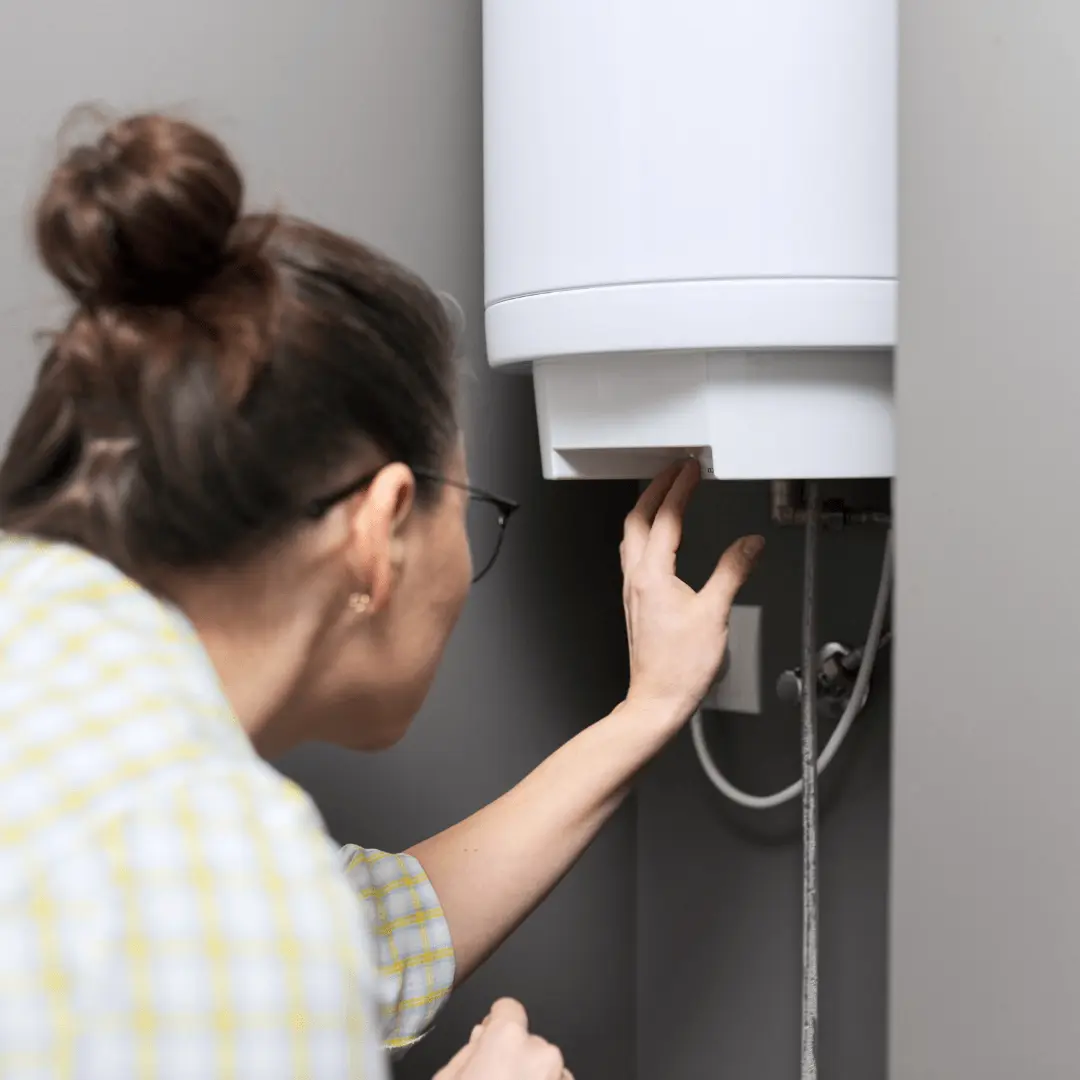
24/7 Emergency Service
Water heaters can be tricky. You certainly don’t want to be shivering in the shower. However, you want to ensure you and your family are safe from scalding burns. This blog will give you all the information you need to safely adjust your water heater temperature to the right setting.
However, suppose you find that your water heater is not producing the temperature you have set it to. In that case, we encourage you to contact the experienced professionals at Flow Pros Plumbing. It’s all too easy to adjust the temperature to unsafe levels. Give us a call to ensure the health and safety of your family.
What Water Heater Temperature is Ideal?
The recommended water heater temperature is 120 degrees Fahrenheit. This is the setting most water heaters are on when first installed, and it is suggested that you keep it at this temperature.
If you are renting a home or apartment, there is a chance a previous tenant has adjusted the water heater. Before assuming the temperature is lower or higher than the recommended setting, manually check the water.
Keep in mind that unusually cold water may result from a broken heating element or another water heater issue. If you suspect your unit may need a repair, contact your local plumbers to inspect it.
First, Check the Current Water Temperature
Many water heaters have dials that do not indicate the specific temperature it is set to. More commonly, notches show if the device is set to cold, warm, or hot. Unfortunately, some homeowners will assume the temperature is set lower than 120 degrees Fahrenheit by estimating based on the dial. So, they kick up the heat a few notches.
Unfortunately, this has sent many people to the hospital, particularly children. Setting the water heater temperature above the recommended degree can be dangerous and burn your skin.
However, there is an easy and accurate method for determining your water heater temperature. You’ll want to check the temperature using the steps below before making any adjustments:
- At the faucet closest to where your water heater is stored, run the hot water for 3 to 5 minutes.
- Grab a room-temperature glass and fill it with the running hot water.
- Use a cooking thermometer to check the temperature of the water.
- If the temperature is above or below 120 degrees, you may adjust the setting on your water heater.
- Wait about 3 hours and test the water by repeating the above steps.
- Keep repeating the method until the thermometer reads 120 degrees.
Additionally, it is wise to recheck the water in the morning to ensure it is producing the correct temperature. With a permanent marker, mark the dial at the right setting to avoid having to test your water in the future.
Adjusting the Temperature on a Tankless Water Heater
Electric, gas, and tankless water heaters have different ways of adjusting the temperature. If you have a tankless water heater, your job just got much easier!
Tankless water heaters have a convenient digital control panel where you can actually see the temperature setting. All you need to do is decrease or increase the temperature as needed.
Nevertheless, it’s always a good idea to ensure the reading is accurate by testing the temperature of your hot water with a thermometer.
Setting Your Gas Water Heater Temperature
It’s not too difficult to adjust your gas water heater temperature, either. Use the following tips to fix the setting:
- Turn the dial located at the bottom of the unit.
- Twisting the dial left or counterclockwise will increase the temperature to produce hotter water.
- Moving the dial to the right or clockwise will decrease the temperature, making the water cooler.
- Most gas water heaters have lower temperatures, around 90 to 110 degrees Fahrenheit.
- Gas water heaters typically do not exceed 150 degrees Fahrenheit.
Adjusting the Temperature of Your Electric Water Heater
The process of setting your electric water heater temperature is more involved. However, it’s certainly not a challenging task for most homeowners. The steps below will help you safely adjust the temperature of your electric water heater.
STEP 1 | Turn Off the Water Heater.
Locate the circuit breaker in your home and find the switch for your electric water heater. Flip it to the “off” position to ensure your safety when opening the device.
If the breaker is not labeled, you may need to experiment with the switches to determine which one is for the water heater. A multimeter will allow you to test the water heater for a live current. Be sure to label the switch once you have discovered which one it is.
STEP 2 | Remove the Access Panel and Insulation.
On the side of the unit, you’ll find the access panel with two screws at the bottom and top. Loosen the screws with a flat-blade screwdriver and remove the panel. There may also be a plastic cover that should easily separate from the unit with a gentle pull.
Then remove the insulation covering the controls.
STEP 3 | Adjusting the Temperature
You will see a colored adjusting screw that allows you to decrease or increase the water heater temperature. Use a flat-blade screwdriver to twist the screw to the left or right. Adjusting the screw to the left or counterclockwise will decrease the temperature, and turning it to the right or clockwise will increase it.
STEP 4 | Replace the Panel.
Place the insulation, plastic cover, and access panel back onto the unit once you have adjusted the water heater temperature to your liking. Ensure the insulation covers the controls entirely and securely screw the panel back in place.
STEP 5 | Restore the Power.
Finally, you can flip the switch on the circuit breaker back to the “on” position. Remember to be patient with your adjustments. It can take about an hour for the unit to reach the temperature you set it to.
You Can Save Money with a Lower Water Heater Temperature
You can save some cash on your utility bills by setting the water heater temperature a little lower than the recommended 120 degrees Fahrenheit. Likewise, it will save energy if you are looking for all the little ways you can make your home living greener.
However, setting the temperature too low can potentially make you and your family ill. The hot water produced by your water heater kills bacteria while showering, cleaning dishes, and washing laundry.
There are safer methods of saving money and energy at home:
- Use less hot water when you can.
- Take shorter showers.
- Use the dishwasher instead of washing dishes by hand.
- Insulate the hot water pipes.
- Upgrade your old and less energy-efficient water heater. The average unit will typically last about 8 to 10 years before it starts to work less effectively.
- Consider an ENERGY STAR certified water heater.
Enjoy Warmer Water at Home
On the other hand, you can slightly increase the water heater temperature to enjoy warmer baths and showers. Use caution when increasing the setting. It’s easy to accidentally adjust the temperature to unsafe levels that may cause burns.
Having Water Heater Troubles?
When testing your water, have you discovered the actual temperature isn’t matching the reading on your water heater’s control panel? If so, reach out to the knowledgeable and friendly team at Flow Pros Plumbing.
We are very familiar with all kinds of water heaters, whether electric, gas-powered, or tankless. Flow Pros knows just what to do to diagnose your water heater’s issues.
Before risking your health and safety by adjusting your water heater temperature too low or too high, give Flow Pros Plumbing a call.
